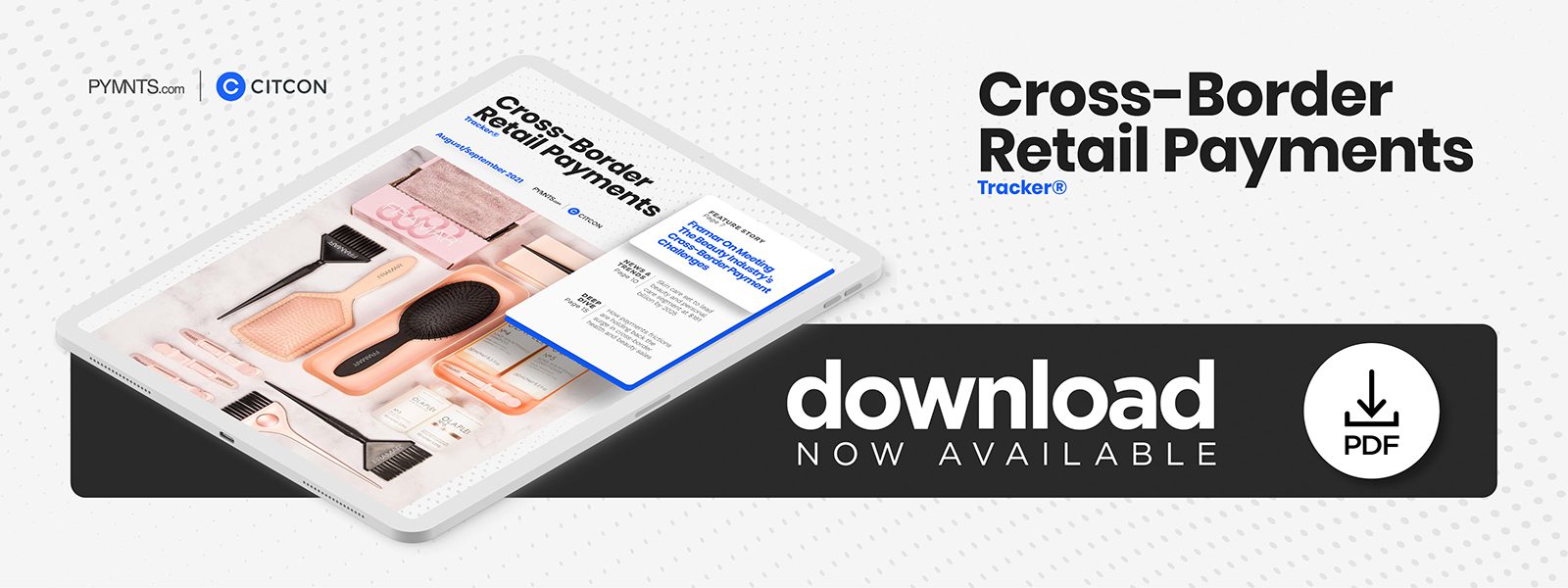Digital Wallets Refresh Sales for Cross-Border Beauty eTailers

eCommerce continues its decade-long rise, with global online sales spiking 38% year over year in the first quarter of 2021 and projected to hit $4.2 trillion by the end of the year. A steadily growing fraction of these sales are conducted across borders, with 68% of online consumers purchasing something from outside their own country in 2020, according to a global survey.
These trends have significant implications for the beauty and personal care segment, which is expected to grow nearly 50% by 2025 to exceed $716 billion. In-person sales continue to dominate the market, but eCommerce is steadily increasing its share and is now set to reach 48% in the U.S. by 2023. Beauty and personal care items are one of the most popular cross-border retail purchases, accounting for 18% of international retail buys, according to one survey.
In the “Cross-Border Retail Payments Tracker®,” PYMNTS explores the latest developments in cross-border payments, including their growing importance to everyday consumers, their impact on the beauty and personal care industry and how merchants are dealing with the complications inherent to these transactions.
Developments From Around the World of Cross-Border Retail Payments
Online shopping is surging in popularity, according to a survey, becoming more important to nearly three-quarters of respondents and with two-thirds expected to increase their eCommerce purchases. One rapidly growing category is online beauty and personal care, which climbed 23% between 2020 and mid-2021 despite overall sales in the sector rising just 3%. Skin care alone is forecast to reach $181 billion by 2025, which would make it the largest beauty and personal care segment.
 Online shopping across borders is also popular abroad, with more than 75% of Singaporeans, for example, making a cross-border purchase between late 2020 and early 2021 — more than any other market in a 13-country study. Cosmetics and beauty items were the second-most popular category for international shoppers after apparel. Fifty-six percent of Singaporean consumers cited lower prices as their reason for buying from overseas.
Online shopping across borders is also popular abroad, with more than 75% of Singaporeans, for example, making a cross-border purchase between late 2020 and early 2021 — more than any other market in a 13-country study. Cosmetics and beauty items were the second-most popular category for international shoppers after apparel. Fifty-six percent of Singaporean consumers cited lower prices as their reason for buying from overseas.
The pandemic has irreversibly changed the way shoppers have made purchases, and merchants are scrambling to keep up with the new normal. Wei Jiang, president and chief operating officer of global payments platform Citcon, said that the lack of point-of-sale (POS) systems capable of supporting easy QR code-based touchless payments is a multitrillion-dollar lost payment opportunity. The company is adding Oracle Validated Integration with Xstore Expertise to its payment gateway, which will allow merchants to enable QR code payments from digital wallets without changing their POS hardware.
For more on these and other cross-border payments news items, download this month’s Tracker.
How the Beauty Industry Handles the Challenges of Cross-Border Payments
One market segment dealing with the complications of cross border-payments is the beauty industry, which has to face currency exchanges, conflicting compliance regulations and more. Navigating these obstacles can often be best left to the experts, according to beauty retailer Framar.
In this month’s Feature Story, PYMNTS talks with Framar’s vice president of sales and product development, Giovanni Gallo, about how partnering with Shopify helped solve many of its cross-border payments problems. 
Deep Dive: Cross-Border Sales in Beauty and Personal Care Meet Payment Bottlenecks
The beauty and personal care industry is quickly expanding, with experts projecting $500 billion in revenue this year and double-digit growth through 2025. Much of this expansion will be driven by eCommerce, which is expected to account for 23% of total sales worldwide by 2025. Cross-border customers are a particularly fast-growing segment but face far more friction than domestic shoppers, preventing many of them from completing their purchases.
This month’s Deep Dive takes an in-depth look at the cross-border beauty and personal care eCommerce landscape, including growth drivers and the obstacles keeping retailers from capturing more customers.
About the Tracker
The “Cross-Border Retail Payments Tracker®,” a PYMNTS and Citcon collaboration, maps the use and adoption of emerging technologies and solutions to solve cross-border payment hurdles in both emerging and developed markets.
